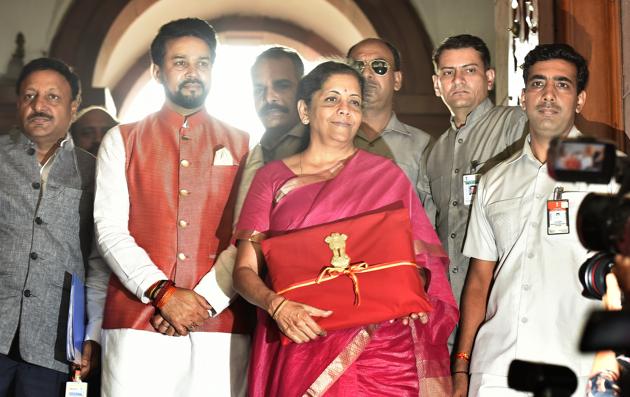What the quest for a $5 trillion economy entails
Did the inertia of the budgetary process sabotage the claimed novelty of the budget? Did it miss a trick?
Following the Economic Survey, which turned it into a hashtag, it was only to be expected that the finance minister would say “it is well within our capacity to reach the $5 trillion [economy] in the next few years”. And well it is.

In 2000, India’s dollar GDP was a little less than half a trillion. By 2014, when Narendra Modi came to power, it was a little over 2 trillion dollars – it had risen over four times in 15 years. Indeed, if India continued growing at the same rate it did during the previous NDA regime and ‘dysfunctional’ UPA decade, our date with $5 trillion would have been 2023, just before the next elections. So, will we still get almost there, by almost then, if we just manage to replicate what we did before?
What’s true of income is also true of taxes. The minister informed us that direct tax collections rose from Rs 6.38 lakh crore in 2013-14 to Rs 11.37 lakh crore in 2018-19 – an annual increase of 10.3%, “growing at a double digit rate”. Of course, the Economic Survey also reminds us that in the eighties, it grew at 16%, in the nineties, at 13.3%, and 15.3% in the 2000s. Indeed, we might pleasantly surprise ourselves.
The $5 trillion discourse is a consequence of compounded growth and the fact the exchange rates have not fully adjusted to inflation differentials, especially in emerging economies where foreign capital likes to invest. The capital inflows prevent the rupee from depreciating as much as it should, given domestic inflation (the budget implicitly assumes it to be 5%) – which actually makes Indian products costlier in dollars than they should be, which could – possibly – affect our push to grow by exporting. What’s good for $5 trillion is not necessarily good for exports, though it is possible to get real GDP growth, even if export prices face some headwind. We can hope, just like savings is not responsive to interest rates, that our buyers are not that responsive to prices either.
Is the budget shifting gears? If so, we are not doing so very abruptly. If we compare the budget shares for outlays on major schemes, it appears that the big expenditures, on PM-Kisan, for example, have been financed largely through redistributing growth in overall expenditure, from Rs 8 lakh crore to over Rs 11 lakh crore. The shares of many older major schemes has been reduced, even as their absolute allocations have risen. While the minister spoke about gaon, garib and kisan and the common man, the umbrella schemes for scheduled castes, scheduled tribes and minorities, has taken a hit, relatively for the first two, and an absolute fall from Rs 3,948 crore in expenditure in 2017-18 to an allocation of Rs 1,590 crore in this budget, a reduction in share from 0.5% to a little over 0.1%. MGNREGS remains substantial, with an allocation of Rs 60,000 crore, more than the actual Rs 55,166 crore spent in 2017-18 and Rs 55,000 crore allocated last year, but its share has dropped by over 20%, from 6.9% to 5.3%. In this budget, at least, MGNREGS is not paying for PM-Kisan. But, neither are fertilizer subsidies that have risen from Rs 66,467 crore in 2017-18 to nearly Rs 80,000 crore, but their share of expenditure on major schemes has dropped from 8.3% to 7%. On the structure of tax revenues and expenditure, too the share of GDP in this budget are almost identical to last year. Did the inertia of the budgetary process sabotage the claimed novelty of the budget? Did the budget miss a trick?
Maybe it’s too early and a little risky with Maharashtra elections looming (the allocation for cotton procurement has risen to over Rs 2,000 crore from Rs 100 crore in 2017-18), but even a gesture towards moving to direct transfers, away from price subsidies, would have been nice.
This is a budget that is taking firm, if relatively gentle steps, towards shaping a New India. For a mandate as massive as the Modi government has received, a first budget could have tried harder. It could have relied a bit more on wing in the budget and prayer in the Survey.
Partha Mukhopadhyay is senior fellow, Centre for Policy Research
The views expressed are personal






